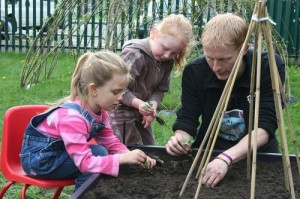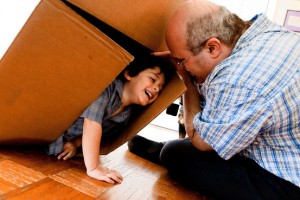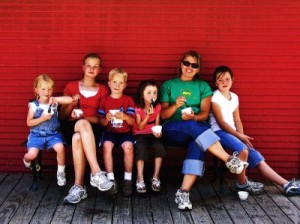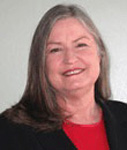
Core is about family being together
Many parents struggle to apply an effective core phase. They can define it but can’t figure out how to do it. This was just the question posed by a young mother on an online group site. The answer given below, by Donna Goff was, in my opinion, AMAZING and I really wanted to share it with you all. Having her permission, I can.
I myself graduated in 1968 so her response really resonated with me. I hope that you all find this as helpful as I did.
What does 1973 have to do with anything? You make me smile! In this case what we do not know may just be a stumbling block. Most can describe and rattle off the purposes and aims of the core phase and even list the curriculum. Visualizing it and putting it into action is another story. Hence, in many homes children are ignored while mom checks out on the computer in search of the silver bullet, or children lay all day and develop electronic dependence. We may be able to define core, but why do so many people have a struggle applying an affective core phase?
1973 is the year I graduated from high school. Most of those who graduated from high school that year started school in 1960. Those were children born 10 years after the war. They were the first TV generation. When they get nostalgic for nuclear family they often turn to the role models they had– the Cleavers, Nelsons, Reeds…
The week I graduated from high school I remember the head lines. The class of 1973 was the first time that a majority of both males and females graduating wanted professional degrees.
I watched as my peers went to college. These were youth that were raised in the home and not in institutions during their preschool years. Very few were in preschool or day care as it was called back then. Kindergarten was non academic.

Working with parents helps children learn
Head start was not even created until 1965! It is a product of the second turning. It was designed for the children of the working poor.
These were children from less stable homes where advantages were few to prepare children for school and life.
In the late 70s most parents still resisted “outside of family” solutions for care of children while working. Government wanted more tax payers and business wanted more consumers. “Stay at home” moms were degraded. Preschool was sold as a benefit. I knew women that actually went to work to be able to offer their children the “advantage” of preschool!
All of this struck blows to the core phase and often undermined family and even stable adult life because most children were simply not getting the skills they needed for a whole life in institutional and latchkey settings.
Those born after 1973 were more likely to have been institutionalized young or were latchkey. Many were raised in a broken home. If they did work at house work at home it was either irregular (when it became no longer something a parent could endure) or task (individual chore) oriented rather than working together. Therefore most were less like to have structure and understanding of systems. School was the only structure in many lives. So when home school moms seem to struggle with running a home and doing homeschool (especially when mom has access to the distraction of the internet) children are often sent to school or ignored. Usually, moms have told me they were sending their children to school for a more structured experience, which translated= discipline. Recreation became something that each person did next to each other, whether running, skiing, watching a movie, TV, or gaming. There was less and less interaction.

Spend time with your children-they want you
I have been homeschooling for almost three decades. I have watched trends come and go. If we want to succeed, we must start with ourselves. We also have to realize that the paradigm of early childhood academics is the new kid on the block and has not yielded promised results. When we realize that, we can ditch the guilt and do what is in the true best interest of our children. We can free ourselves to do core and love of learning without being over anxious and without falling for the “silver bullet” myth. There are no short cuts. This is real life. I am not saying that children cannot and do not succeed in other settings. However, I feel those who succeed
without a healthy core phase home are the exception rather than the rule.
It took me years to realize this. What tipped me? When a mom said, “What do I do with my children so I can care for my home?” She had no idea that she should do it with them. That was something taken for granted in most homes during the preschool years of those who graduated before 1973; even more so for those generations before TV became a distraction.”
Thank you Donna!

Lots of ages can make for lots of fun!
I am frequently asked “How can I use the Closet when I have so many children of different ages.” I respond with “Well how do you prepare dinner or give baths or read as a family or go on a trip in the car. School isn’t any different. Using the Closet isn’t any different.” That’s when I get the stare. The blank look was the tip off for me. I realized that my question askers didn’t even know what I was talking about because doing things as a family has become such a foreign experience.
Let’s get back to family. Let’s work together. Let’s read together. Let’s talk and listen together. Let’s learn together and enjoy one another’s presence. Let’s develop a skill that has slowly been lost – doing things with another person not just by another person.
Let me end with an example of what we are talking about here. There is a couple who live downstairs from me. One day as I came home I could see them out on the deck with no children around. “You guys having a date.” “Yup”, they responded. As I rounded the hedge I saw them each playing a game on their separate cell phones – but they were on a date!
Kids learn what they see and experience. Let’s let them experience the opportunity to learn skills by our side. That is the essence of Core.

Donna Goff
Donna Goff lives in Utah with her husband Roger and their two youngest children. Donna was born in the Midwest and raised in Hawaii. She and her husband are parents of four sons and three daughters 13-33. She is grandmother of two granddaughters and seven grandsons, one grandson on the way all under eight! She has home educated her children since the early 1980s, and been doing TJEd since 1995.
Donna earned her BA in Fine Art and Design from Brigham Young University ‘80, 5 Pillar Certification ‘06, and MA Ed. George Wythe University ‘08, Cum Laude. Donna has been a keynote speaker and has presented at dozens of conferences in California, Nevada, Utah and Virginia, since 1995. She created Mentoring Our Own TJEd Yahoo Group in 2002. She founded Moor House Academy, a TJEd private cyber-school and cottage school / home education hybrid in 2002. Donna and her daughters co-founded The Princess Academies in 2009, an organization for mothers and daughters promoting a whole education for girls. Donna loves to be a wife and mother; she also loves to learn, create, provident living, gardening, hiking, stained glass murals, sharing, being a frugalite and life!
Possibly Related Posts:
- Self Care for Better Parenting – Part 2
- Self Care for Better Parenting – Part 1
- Got Kids 24/7 – 2 Tips to make life easier
- The Screen Free Experiment
- 5 Tips to Put Family first



{ 0 comments… add one now }